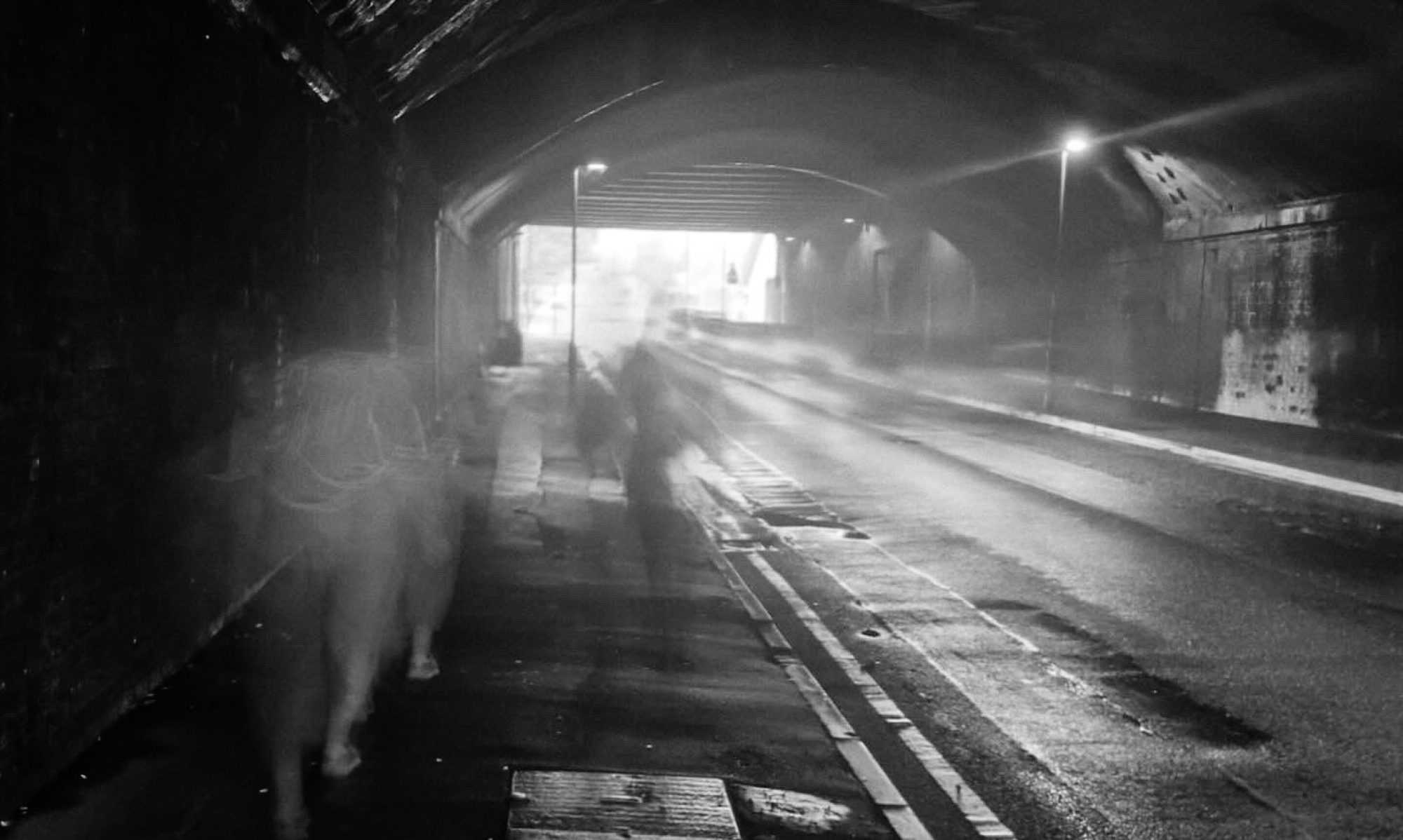As the academic year comes to a close and the printmaking studio empties of frantic students I have found some time to begin experimenting with impurities and the rhizome.
I have been very kindly given a number of large, lightly etched zinc plates. My usual practice is to, grain, aquatint and etch zinc multiple times with a deep bite, so the light etch would not interfere with my work, but as I occasionally laminate plates with photopolymer it is best to start with a neat surface.
Whilst graining the plates by hand, using a medium carborundum, block and sandpaper I removed a substantial layer of the original etch. As hand graining with a block is a laborious process I broke the monotony by periodically inking and printing the plates. I thought that if nothing else I would be left with a series of prints showing the reduction of an etch and the appearance of a ghost like ‘nothingness’.
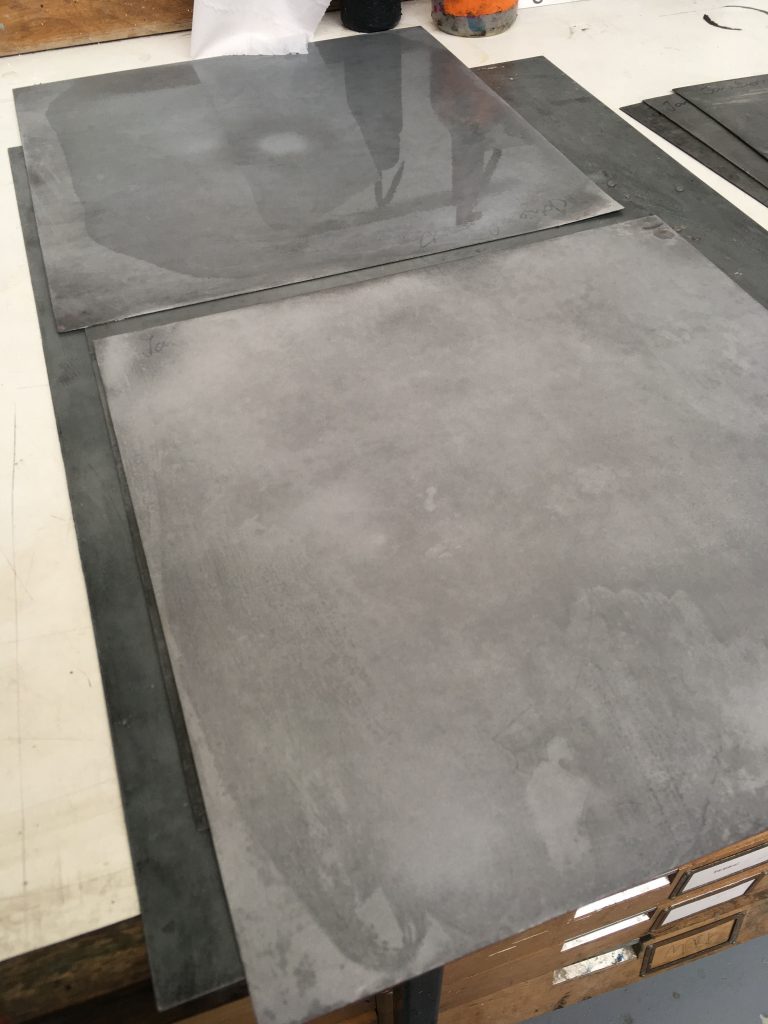
Once grained the plates were left to air dry over night. In the morning I was met by beautiful striations in the metal.
Ordinarily I would re-grain, wash, de-grease, aquatint, laminate expose and etch; but since I have time, it seems appropriate to investigate the possibility of printing with impurities. Each set of striations is unique to the plate and I imagine, unable to recreate.
The striations are caused by the oxidisation of the zinc and the patterns are informed by impurities left on the surface from water and carborundum.
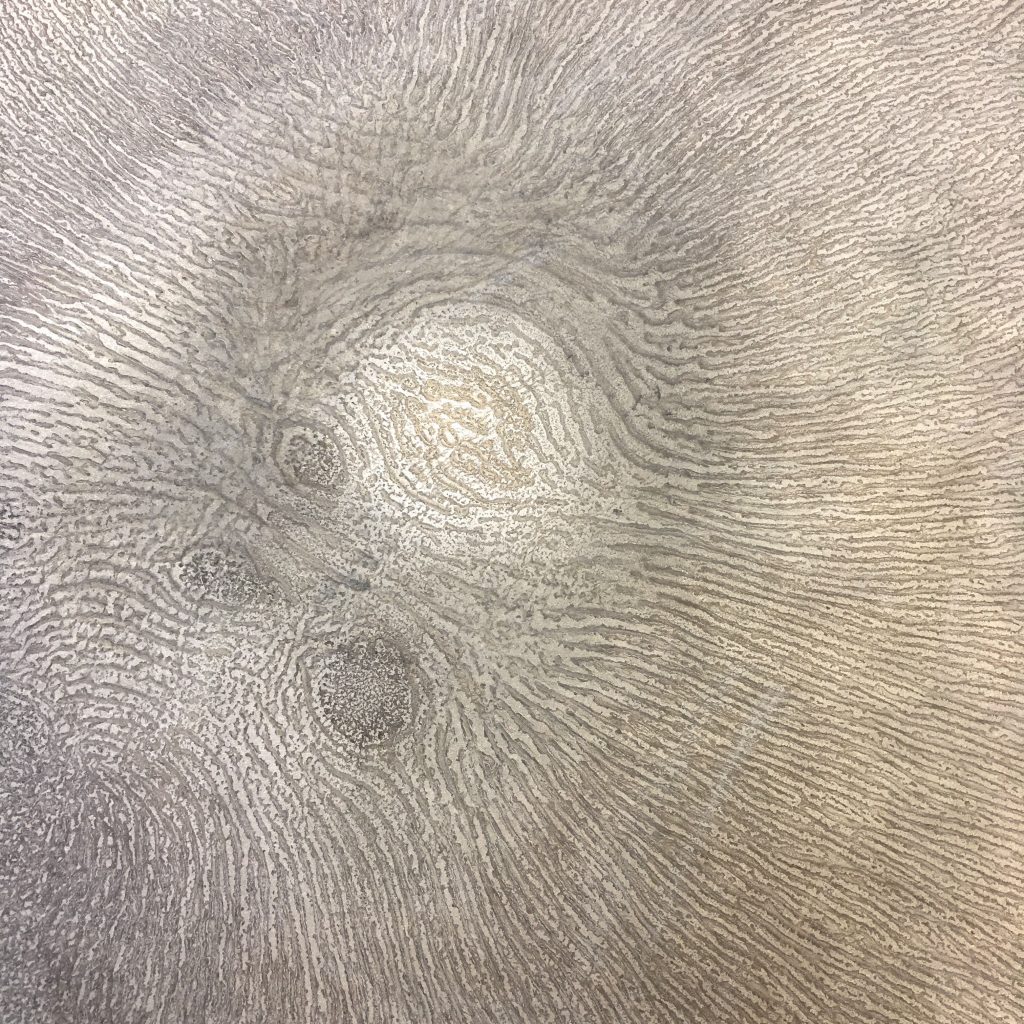
As I have been working on a PhD application for some time it is a relaxing project to work on, but, as ever, my work is not made in a vacuum and without a wider context.
The striations are to me, reminiscent of the rhizomes, characterised in A Thousand Plateaus: Capitalism and Schizophrenia by Deleuze and Guattari
‘Write, form a rhizome, increase your territory by deterritorialisation, extend the line of flight to the point where it becomes an abstract machine covering the entire plane of consistency. “Go first to your old plant and watch carefully the watercourse made by the rain. By now the rain must have carried the seeds far away. Watch the crevices made by the runoff, and from them determine the direction of the flow. Then find the plant that is growing at the farthest point from your plant. All the devil’s weed plants that are growing in between are yours. Later… you can extend the size of your territory by following the watercourse from each point along the way.” Music has always sent out lines of flight, like so many “transformational multiplicities,” even overturning the very codes that structure or arborify it; that is why musical form, right down to its ruptures and proliferations, is comparable to a weed, a rhizome.’
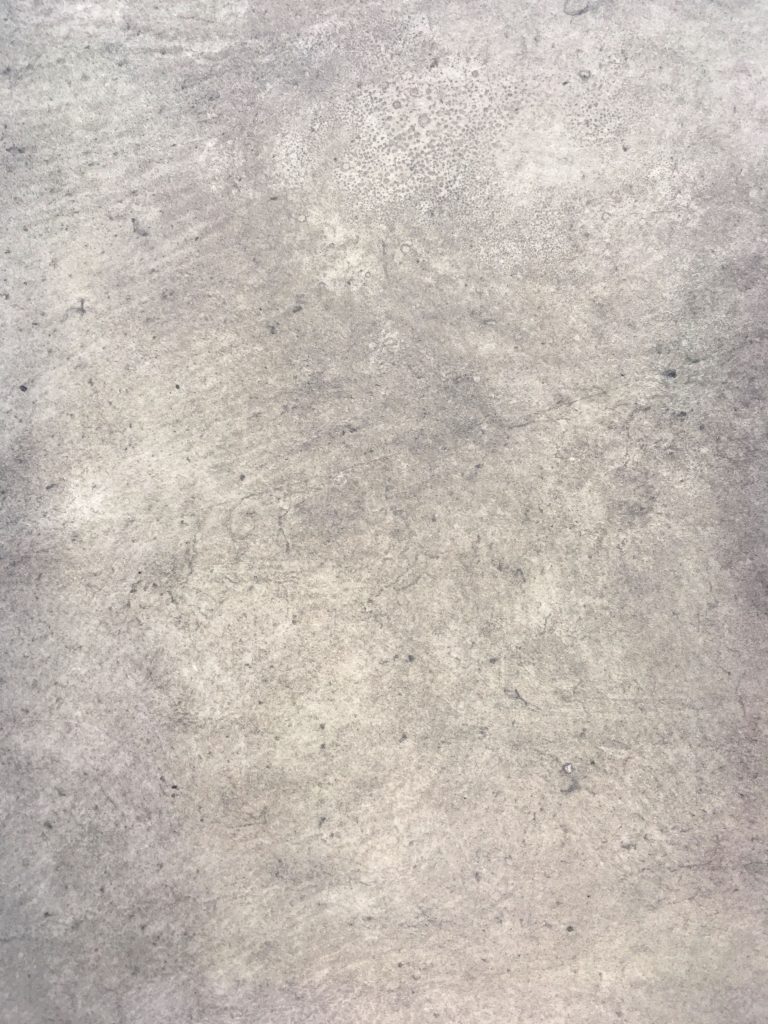
The original etch, though shallow and grained still has a hold on the plate. The interaction between the previous etch and new temporary striations form a multiplicity. Territories are re-established through the process of re-graining with one process taking over from another. The rhizome is formed through the deterritorialisation of one artist work and the reterritorialisation of mine, boundaries are crossed and redefined. I question the nature of the multiplicity by eroding the permanence of an etch and replacing it with an accidental, impure oxidised striation.
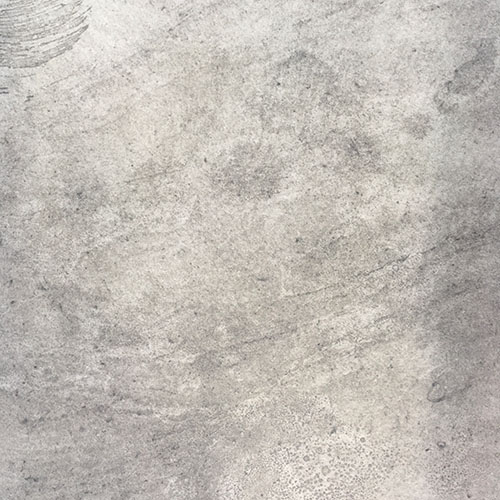
Perhaps this will be interesting, if the plates are left to air dry repeatedly, different marks will be recorded. They can be grained, re-grained, re-dried and left again. A new multiplicity is formed.
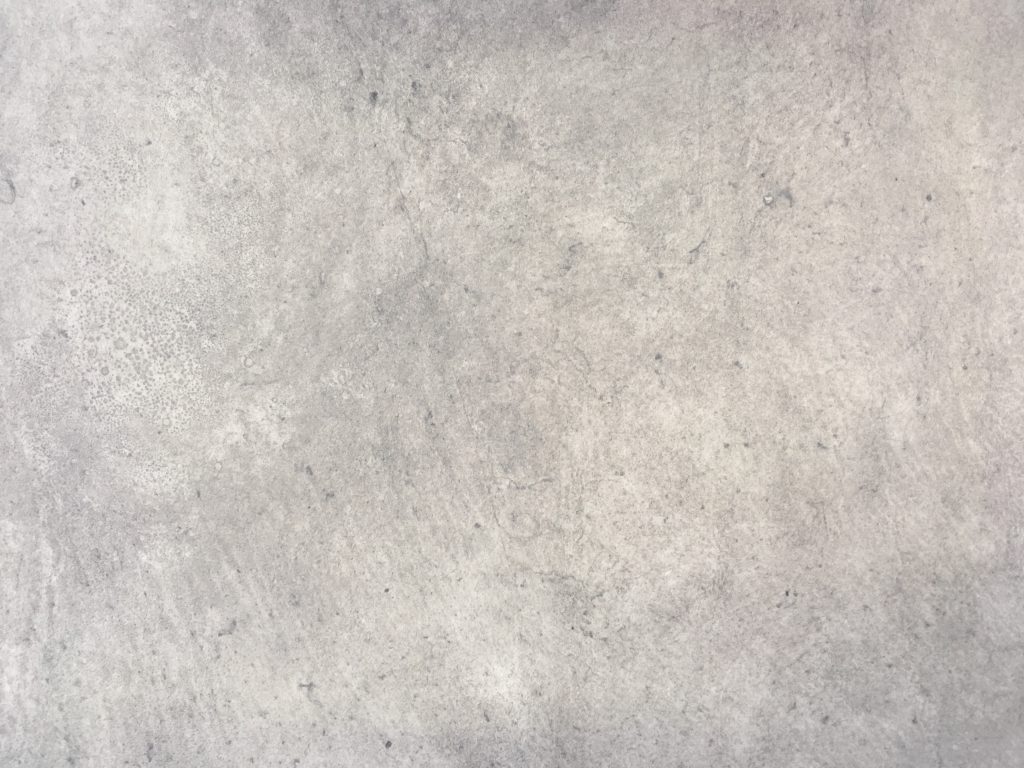
Click here to read more about the ongoing project.
